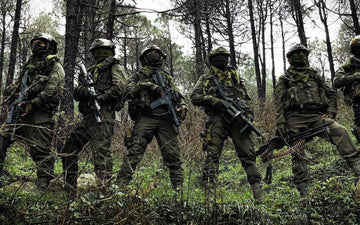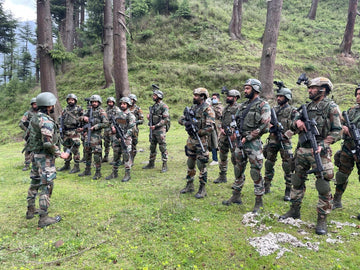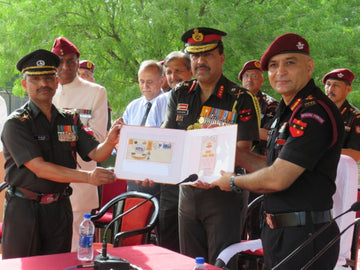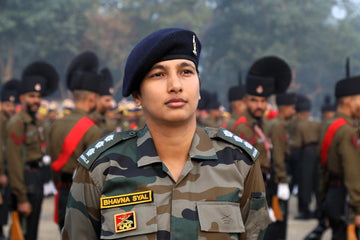The Indian Army, one of the world's largest military forces, stands as a cornerstone of national security and integrity. A vital component of this force is the Lieutenant rank, which serves as the entry point for commissioned officers. This article delves into the pay scale, salary, and allowances for Lieutenants in the Indian Army, shedding light on a significant aspect of military life that combines financial compensation with the rigors of service.
Historical Context
Understanding the pay structure of the Indian Army, particularly for Lieutenants, requires a grasp of its historical development. Military pay has evolved considerably since India gained independence in 1947. Early pay structures were rudimentary and heavily influenced by colonial templates. Over the decades, numerous pay commissions have been established to revise compensation in line with the socio-economic changes in the country.
The 7th Pay Commission, implemented in 2016, represents a pivotal shift in re-evaluating the salaries and allowances of armed forces personnel. This commission aimed to address the growing demands for fair compensation, especially taking into consideration inflation and the unique challenges faced by military personnel.
Basic Pay Structure for Lieutenants
The salary framework for a Lieutenant in the Indian Army is classified under Pay Level 10 according to the 7th Pay Commission. The basic pay for this rank ranges from ₹56,100 to ₹1,77,500. This wide range reflects not only the experience and tenure of the officers but also provides a comprehensive structure that aligns with their responsibilities.
Detailed Breakdown of Basic Pay
- Initial Compensation: When a new officer steps into the role of Lieutenant, they start at the lower end of the scale, earning ₹56,100 monthly.
- Progression: With promotions and appropriate tenure, the pay increases, culminating at ₹1,77,500 for senior Lieutenants with substantial service records.
Allowances – A Comprehensive Overview
In addition to the basic pay, various allowances significantly enhance the financial standing of Lieutenants. These allowances are crafted to support Lieutenants in managing their unique needs due to the nature of military service.
Dearness Allowance (DA)
The Dearness Allowance is intended to mitigate the effects of inflation on the purchasing power of officers. It is revised periodically based on the Consumer Price Index (CPI), ensuring that the real income of personnel is protected against economic fluctuations.
Military Service Pay (MSP)
The Military Service Pay (MSP) stands at ₹15,500 and acknowledges the distinct challenges of military life. This pay acts as a recognition of the adversities faced by personnel on duty, offering them additional financial security.
House Rent Allowance (HRA)
The House Rent Allowance varies according to the location of the officer's posting. It aims to assure officers can maintain suitable living conditions, regardless of whether they are stationed in urban, rural, or metropolitan areas. HRA is allocated as follows based on area classifications:
- Metropolitan Cities: Higher allowances due to increased living costs.
- Urban Towns: Moderate allowances.
- Rural Areas: Lower allowances, reflecting lower living costs.
Transport Allowance
The Transport Allowance is aimed at covering travel expenses incurred by Lieutenants, especially between duty stations and home. This allowance ranges from ₹3,600 to ₹7,200, contingent on geographical factors.
Field Area Allowance
For personnel deployed in challenging field conditions, the Field Area Allowance can range between ₹10,500 to ₹25,000. This enablement is crucial for covering the increased hardships encountered, including food and living costs.
High Altitude Allowance
Posted in high-altitude regions, Lieutenants receive the High Altitude Allowance that ranges from ₹1,600 to ₹16,900. This allowance is essential for addressing health challenges and other difficulties faced in areas like the Himalayas, where oxygen levels are lower and weather conditions harsher.
Uniform Allowance
The Uniform Allowance is an annual payment of ₹20,000 intended to provide Lieutenants with the necessary military attire, ensuring they maintain a standard appearance and are equipped for their roles.
Other Financial Benefits
In addition to the allowances already discussed, Lieutenants may qualify for several other financial benefits, enhancing their overall pay package:
- Counterinsurgency Allowance: ₹6,300 for officers engaged in operations in sensitive regions.
- Parachute Pay: ₹1,200 for those involved in airborne operations and training.
These components collectively contribute to a Lieutenant's total compensation, making military service financially competitive with many civilian career paths.
Total Compensation Overview
When considering the total compensation of a Lieutenant in the Indian Army, one must account for the basic pay alongside all applicable allowances. This amalgamation results in a compensation structure that is substantial and reflective of the responsibilities held.
For instance, factoring in the basic pay of ₹56,100 and the Military Service Pay of ₹15,500, along with the other allowances, the total monthly income can rise significantly, especially for Lieutenants posted in regions with higher allowances for transport, field, or high altitude.
Case Studies: Real-World Applications of Salary and Allowances
To further illustrate the effects of the pay scale and allowances, consider two hypothetical case studies of Lieutenants serving in different capacities:
Case Study 1: Lieutenant A - Urban Posting
Lieutenant A is stationed in Delhi, classified as a metropolitan posting:
- Basic Pay: ₹56,100
- DA: ₹11,000 (approx. at a rate of 19.6%)
- MSP: ₹15,500
- HRA: ₹18,000 (approx. 30% of basic pay)
- Transport Allowance: ₹6,000
- Field Area Allowance: ₹0
- High Altitude Allowance: ₹0
- Uniform Allowance: ₹20,000 annually
This brings Lieutenant A’s total monthly compensation to approximately ₹106,600 excluding additional benefits.
Case Study 2: Lieutenant B - Field Posting
Lieutenant B, however, is deployed in a field area in Jammu & Kashmir:
- Basic Pay: ₹56,100
- DA: ₹11,000
- MSP: ₹15,500
- HRA: ₹10,000 (less due to location)
- Field Area Allowance: ₹20,000
- Transport Allowance: ₹5,000
- High Altitude Allowance: ₹10,000
- Uniform Allowance: ₹20,000 annually
Lieutenant B’s total monthly compensation can rise to approximately ₹118,600, illustrating the significant financial advantages of being posted in challenging areas.
Statistical Data and Research Insights
The compensation structure for soldiers reflects a broader trend in the Indian military that ensures personnel are rewarded adequately for their commitment and service. Data from the Ministry of Defence indicates that the military pay reforms introduced under the 7th Pay Commission resulted in an increased average salary across ranks, with a significant focus on retaining talent within the armed forces.
Statistical studies have shown a direct correlation between enhanced remuneration and longer service terms. As more Lieutenants opt for longevity in service due to fair pay, the quality of leadership and operational effectiveness within the army has seen notable improvement.
Comparative Analysis
When juxtaposed against civilian careers, the financial remuneration of Lieutenants in the Indian Army emerges as competitive. Civilian roles in government and private sectors also provide substantial salaries but lack the comprehensive allowances offered within the military.
Salary packages in the corporate sector might not always include provisions for housing and travel which are essential components of military service. Additionally, the unique nature of military life, with its comprehensive benefits for dependents—such as educational allowances and medical facilities—enhances the overall appeal of a military career.
Challenges and Solutions
Despite the favorable pay structure, challenges persist. Many Lieutenants face unique hardships associated with prolonged deployments in difficult terrains. Ensuring timely compensation and addressing grievances about allowances remains a focus area for the Army.
Proposed Solutions
- Streamlining Allowance Processes: Ensuring timely disbursement of allowances based on postings can alleviate financial stress caused by bureaucratic delays.
- Regular Reviews: Conducting periodic reviews of pay and compensation structures to adjust for rising living costs, particularly in urban centers.
- Flexibility in Allowances: Tailoring allowances to more accurately reflect the living conditions specific to various geographical areas can enhance satisfaction among personnel.
Future Trends and Predictions
Looking into the future, the trends in military remuneration are poised for continual evolution. With the growing emphasis on mental health, work-life balance, and job satisfaction, we can expect further enhancements in pay structures. This could include increased allowances for health and wellness initiatives, along with incentives for long-term service and performance recognition.
Furthermore, as India’s global military obligations expand, the pressures and challenges faced by officers may also evolve, necessitating a reassessment of the allowances and compensation for military personnel, including Lieutenants.
Conclusion
In conclusion, the pay scale and allowances for Lieutenants in the Indian Army constitute a vital aspect of military life, reflecting the government’s commitment to the welfare of its forces. The structured approach to financial compensation—encompassing basic pay, dearness allowances, and various supplementary allowances—ensures that Lieutenants are not only compensated well but are also supported in managing the challenges posed by their unique profession.
As we continue to re-evaluate and enhance these structures, it is crucial to remember the sacrifices made by our armed forces. For aspiring officers considering a career in the Indian Army, understanding this package of pay and allowances is essential for making informed decisions about their future in service.
For those interested in pursuing a career in the Defence Services, resources such as SSBCrack and SSBCrackExams offer invaluable guidance, study materials, and insights, enabling aspirants to prepare effectively for their journey ahead.





